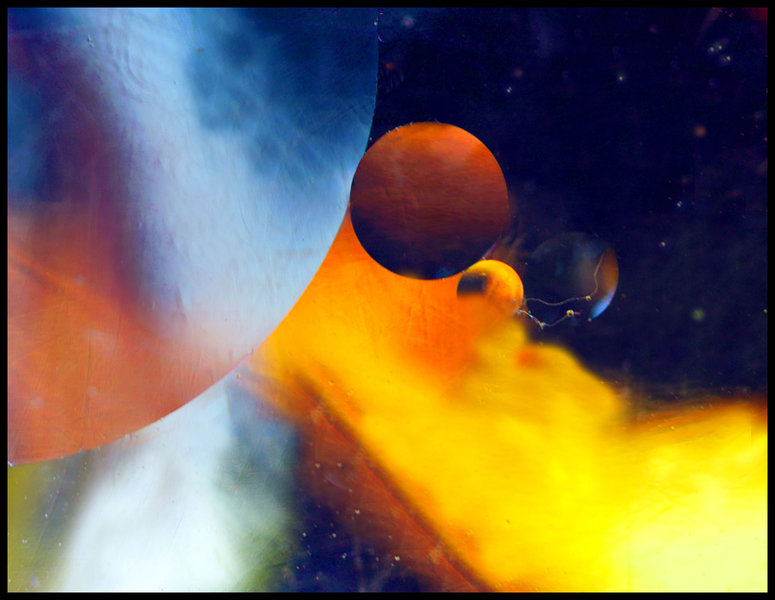laurence2
Well-Known Member
Sigma SD-14
Pentax SMC 100/4 Macro
Fooling around with the macro lens is a lot of fun.
In this case of formation in the Crown Nebula, you can see a gas giant on the upper left being orbited by a Mars type
of planet. The limb of this smaller planet is just starting to traverse in front of the gas giant.
Meanwhile, in the background there are two proto-planets that are being engulfed by the hot gases of the nebula itself. As
a result, there are thin ion streams exchanging between the hot planet and the cool gas giant in the background.
From this perspective, the two background planets look close, but they are actually several light years away. This portion
of the nebula showing the orange and yellow colors is a hot mix of hydrogen and methane gases, giving it a strong
glow.
At the bottom of the image there is an interstellar dust cloud that has just become visible visible as a white mass as it starts
to absorbheat from the nebula.
The far-away rather dim star in the upper right, below the trio of small bright stars is a red-giant star, about 300,000 light years away, and is about 300 times
larger than our own sun.
Pentax SMC 100/4 Macro
Fooling around with the macro lens is a lot of fun.
In this case of formation in the Crown Nebula, you can see a gas giant on the upper left being orbited by a Mars type
of planet. The limb of this smaller planet is just starting to traverse in front of the gas giant.
Meanwhile, in the background there are two proto-planets that are being engulfed by the hot gases of the nebula itself. As
a result, there are thin ion streams exchanging between the hot planet and the cool gas giant in the background.
From this perspective, the two background planets look close, but they are actually several light years away. This portion
of the nebula showing the orange and yellow colors is a hot mix of hydrogen and methane gases, giving it a strong
glow.
At the bottom of the image there is an interstellar dust cloud that has just become visible visible as a white mass as it starts
to absorbheat from the nebula.
The far-away rather dim star in the upper right, below the trio of small bright stars is a red-giant star, about 300,000 light years away, and is about 300 times
larger than our own sun.
Attachments
-
 EXIFEngulf_Macro_100_4.jpg164 KB · Views: 11
EXIFEngulf_Macro_100_4.jpg164 KB · Views: 11